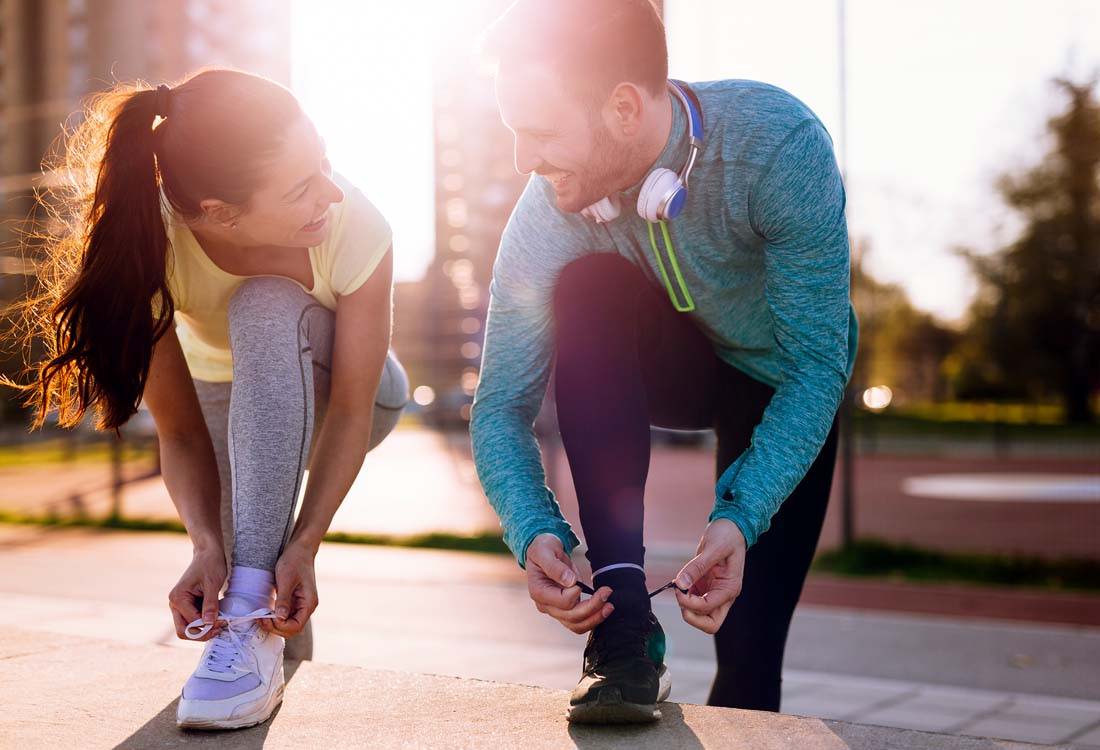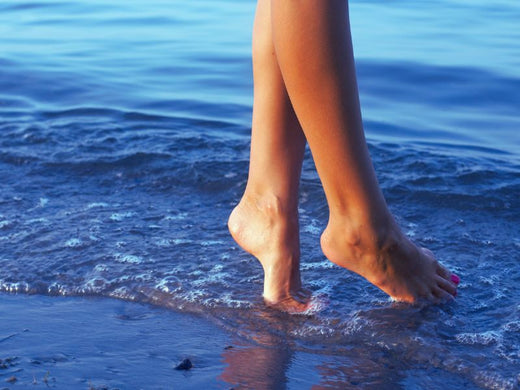Healthy Feet!
Foot Health Tips: Start your New Year on the Right Foot
New Year, Same foot problems? It can be hard to break the cycle. Best intentions, but busy lives. We’ve all been there. We asked Active Feet alum and podiatrist David Hudson for his best foot health tips to help you start the new year on the right foot.

David is one of the many former Active Feet team members that has gone on to practice podiatry (taking some great footwear knowledge with him). You can book in with David at Beyond Clinic in Hawthorn and Connect Health + Movement in Kensington.
What is your best advice for those wanting to be more active in 2022?
Find something that you actually enjoy doing! Being active shouldn’t feel like a chore. Where most people slip up is in forcing themselves to do activities that they simply don’t enjoy. If you don’t know what activity is for you, trying different things out with family or friends is a great way to get started. There really is something out there for everyone whether it be running, the gym, yoga, tennis or simply walking you’re bound to find something that you not only find enjoyable but is going to be fantastic for your health.
What is something you wish people knew about active footwear?
You shouldn’t wait until your sole has worn through the rubber into the foam before you need to replace your shoes! If you’ve let your shoes get this far then it’s safe to say those shoes have long passed their best before date. The midsole (the foam directly underneath your feet protected by the rubber sole) is the real engine room of the shoe. It provides you with the majority of your cushioning, support and shock absorption. Generally speaking, the midsole will become well-worn long before you wear through the rubber sole. Although it sometimes harder to spot this wear.
Things to look out for include:
- A shoe compressing or sinking down to one side,
- the shoe becoming much more flexible through once more rigid areas
- the shoes feeling “flat “ or “lifeless” when they would normally feel springy or responsive when new.

Most avoidable injury?
I’m going to be very broad here and say that rather than one specific injury, overuse injuries in general are the most easily avoided. Overuse injuries cover a whole range of different injuries, whether it is something like stress fractures in bones, tendinopathies in tendons or strains in muscles. At this time of year when many people are getting their fitness plans sorted, it’s important to be mindful that you’re not doing too much too soon. Especially when returning to an activity after a bit of a layoff.
I definitely recommend starting off on the easier side and gradually building up your intensity once you’ve blow off the cobwebs in the first few weeks back. You’ve probably heard the saying “No pain, no gain” which although well-known is unfortunately a bit of a myth, especially when just starting out a new activity. Pain that lingers for more than a day or 2 after your activity is likely your body telling you that you’ve pushed yourself too hard. It could be the start of an overuse injury if you try to continuously push through that pain barrier.
What would you recommend for someone recovering frominjury?
Getting yourself into an activity specific shoe is key, whether that is a running shoes for, you guessed it.. running, netball or tennis shoes for their respective sports or a training shoe for gym or HIIT classes. Each of these shoes are specifically designed to support you; to have your feet and lower limbs working in the most efficient way, to reduce further injury risk and increase performance.
Exactly what shoe that will be will vary from person to person based on their activity, their injury history and their goals moving forward. It’s always recommended to consult with someone who not only knows these elements but also has a solid understanding on how these shoes all differ from one another.
The podiatrically trained staff at Active Feet are always happy to answer any questions regarding footwear, return to sport and injuries in general.
What would you recommend for someone new to exercise?
Comfort should be your number one priority without a doubt! If you have a shoe that just doesn’t feel quite right when you’ve got it on… The chances are it isn’t the correct shoe for you and may actually contribute to a higher risk of injury. Like I mentioned earlier; being activity specific is important, especially when building up conditioning in your new found activity. Feel free to be in touch with our friendly staff if you’re new to exercises and want to find out what shoes may be best for you.
What is one of the most common ailments you see insummer?
Plantar fasciitis is always the number 1 injury concern throughout summer with a perfect storm of variables all thrown into the mix when the weather warms up!
The two main reasons are that people tend to get more active when the sun is out and thongs or bare feet become our defaults. Both of which put much more load through our feet than they typically have coming out of the cooler months. Obviously, we want you to keep hitting your fitness goals so we don’t want you reducing your activity levels. However, having more supportive footwear options is an easy box to tick to keep your feet healthy and happy. Brands like Archies, Ecco and Orthaheel all offer the perfect summer footwear options from thongs right through to off road sandals.
We like to say “Prevention is better than a cure”. Whatis your best advice for people to introduce in day-to-day routines to avoidinjury?
Shoe rotation is probably the most underrated and under-utilised technique for injury prevention. If you’ve never heard of this concept it basically means rotating between 2 or more different shoes for repetitive activates such as walking and running. This works to reduce the risk of injury by altering and balancing how much load or stress any one part of your body is put under when performing repetitive activities.
Using a 5km run as an example; each foot will take approximately 5,00 steps during the run. That’s 5,00 times you are putting 3-4x your bodyweight through each foot. If you run 5km, 3 times a week that becomes 60,000 steps per month. Now think of all those bones and muscles which have to absorb that load over and over again, and you can see why injury rates amongst runners are so high. The repetitive nature of running is difficult to avoid.
This is where shoe rotation comes into play. If you wear 2 different running shoes (differences can be as minor as weight, heel height, flexibility etc) you can shift the load to different areas of the feet and lower limbs. This works to drastically reduce the amount of work an individual muscle or bone has to do across those 60,000 steps, therefore reducing the risk of overusing it and causing an unwanted injury.
Read our article the Importance of Shoe Rotation here




Physio's Guide to Football Boots
5 things you need to know about Plantar Heel Pain